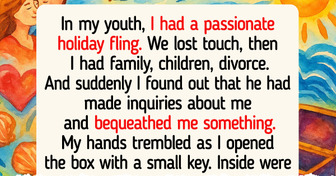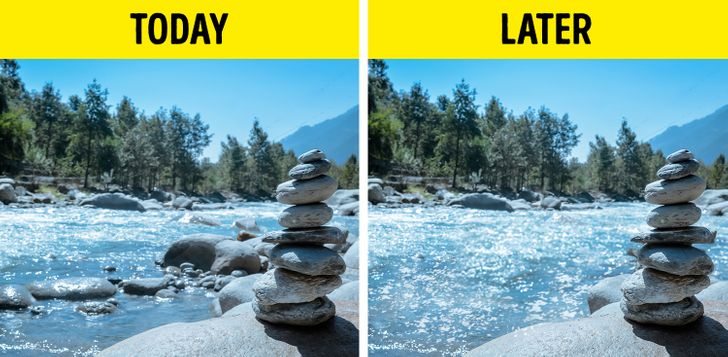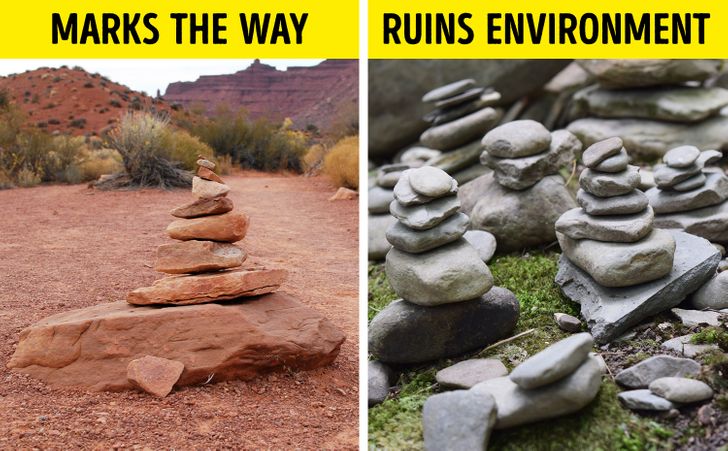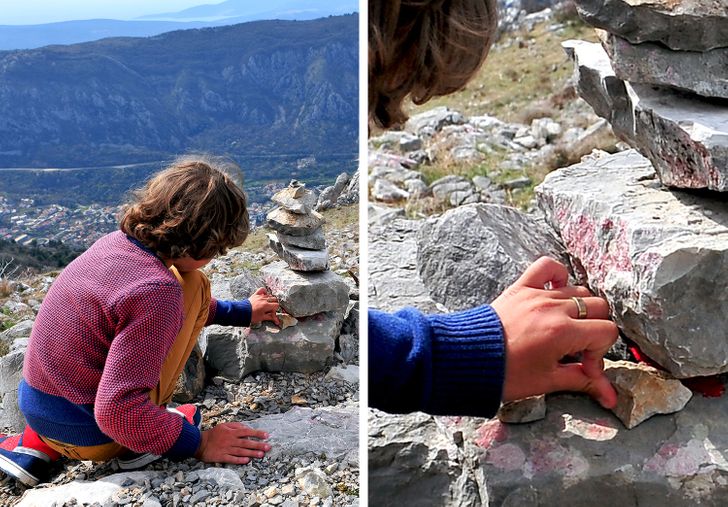agree
Why People Who Love Stacking Rocks Need to Stop Doing It

Stone stacking has been widespread since ancient times — people used it as burial monuments and to mark their environment so they wouldn’t get lost. But now, this activity has turned into a hobby, a way of self-expression, and a meditative practice. And while building cairns is a great way of relaxation, and some of them even look like a piece of art, wildlife specialists are getting worried about this trend. They suggest that this seemingly harmless process damages nature, even if we don’t notice it.
We at Bright Side were surprised to find out that one of tourists’ favorite activities may actually be really devastating to the environment, and we’re in a rush to share our findings with you.
It harms animals and plants.
Stones are a part of the habitat for many tiny creatures, from geckos and crabs, to insects. But when people move stones, it may be like they are ripping off the roofs of these animals’ homes and causing extreme invasions in their lives. Some creatures need stones to preserve water, shelter them from predators and bad weather, and even to help them with reproduction.
It interferes with the natural processes in wildlife.
Cairns may pose a significant threat to ecosystems. For example, in freshwater streams, each rock is full of plants and microorganisms living on it, and interfering with their habitat may break the natural and fragile balance to this ecosystem. If a significant number of stones are moved, it may cause faster erosion and even disrupt the flow of the rivers and streams.
It confuses hikers.
Many national parks use stone piles to guide hikers on potentially confusing paths. But now, there’s some confusion, because there are stones that are part of an official navigation aid system, and then there are creations that were built by travelers. So hikers may have a hard time figuring out what path they should follow, especially if they forgot to check in with the park’s rules before starting their journey.
It breaks the main rule of outdoor ethics, “Leave no trace.”
When we go outdoors, we are likely to want to enjoy the beauty of uninterrupted nature. But high piles of stones are pretty different from what raw nature looks like. While hikers might want to take a rest from the human world, these cairns look like some kind of graffiti that were placed there only to make a mark of someone else’s presence on this territory. If we want to preserve nature, we probably don’t really need to make a personal statement with stones.
Do you know of any other human activities that might harm our planet without us realizing it?
Comments
Dear author, we both know you wrote this without a valid research, and only with the need for exterior validation. Maybe ruining something for others makes you feel better about yourself. It's ok, I've been there, I know for it it. But it dosn't have to be like this. The reasons are not valid, the tone is that of a spoiled little child who does not have the candy he wants and imagines the entire world is here to get him. Write to me if you need to talk to someone, but dont try to ruin innocent acts for anyone else.
I don't really see the point , why would people do this?
Lebay
Related Reads
15 Times the End of a Story Was Better Than the Story Itself

11 True Stories That Prove Real Life Doesn’t Need a Screenplay

I Refuse to Spend My Savings to Rescue My Sister’s Kids, My Money Is Not a Family Fund

15+ People Shared What It’s Really Like When a Surprise Inheritance Lands in Your Lap

15+ Mothers-in-Law Who Can Turn an Ordinary Day Into a Comedy Show

I Absolutely Refused to Be the “Office Party Planner” Just Because I’m a Woman

I Refused to Beg My DIL for Forgiveness—Then Suddenly She Needed Me

15+ Raw Stories About Jealousy That Can Leave You Speechless

I Refuse to Obey My Pregnant DIL’s Demand to Turn a Merry Christmas Into a Vegan One

My Husband Made Me Care for His Sick Mother, So I Served a Payback He Won’t Forget

I Refused to Let Mom Move In With Me—My Privacy Isn’t Up for Debate

13 People Who Prove That True Power Comes From Pure Kindness




